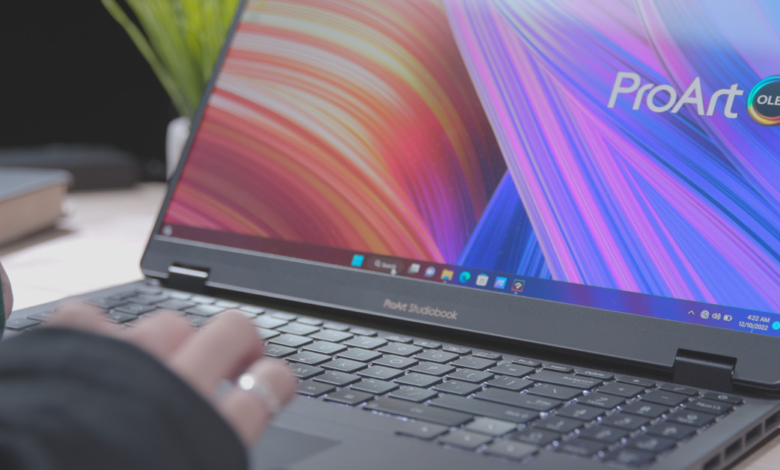Asus debuts (glasses-free) 3D OLED display on new Vivobook Pro

[ad_1]
For some companies that sell gaming and creator-oriented laptops, glasses-free 3D has become a bit of a dream. Acer first tried it back in 2021. Its SpatialLabs technology, which uses a combination of a stereo camera, optical lens, and real-time rendering technology to create decently realistic 3D images, has since made its way to a number of laptops, including the Predator Helios 300 gaming rig.
This year, it’s Asus’ turn. The company has announced Spatial Vision, a “glasses-free (autostereoscopic) 3D OLED technology.” The screens are 3D, 3.2K, OLED, and 120Hz. In a similar manner to Acer’s tech, machines that support Spatial Vision will use a combination of a lenticular lens and advanced eye-tracking camera technology. They render separate images for each eye and follow the position of your head and eyes to adjust them accordingly.
There are a few differences, however, between Asus’ Spatial Vision and Acer’s SpatialLabs. A big one is that Asus’ panels can be used by two people at once, while Acer was clear at SpatialLabs’ launch that it was for one person at a time. I got to try Spatial Vision out briefly, and I was surprised by how well this worked. The technology was successfully able to continue to work for me, the person in the foreground, without being distracted by the person who was peeking over my shoulder.
Otherwise, Spatial Vision seemed to work well in the brief demonstration I received. I rotated images around in space — the 120Hz refresh rate made it a smooth process, and the models felt and looked very real, with unbelievably realistic detail. Things flew out of the screen at me, and I blinked and flinched accordingly. I was able to move my head from side to side without disrupting the image I saw and could flip effortlessly back and forth between 2D and 3D modes.
Anything content that supports 3D (games, videos, etc.) can technically work on the Spatial Vision display. There is a marked difference in quality between, for example, random third-party games and content that was natively designed for the system. The third-party experience wasn’t completely unviewable, though — I’d call it stuttery.
Here’s what Asus says about Spatial Vision:
These incredible OLED displays offer a 1,000,000:1 contrast ratio, a 0.2 ms response time, and a 120 Hz refresh rate for seamless visuals ― all while minimizing crosstalk for the smoothest viewing experience. They also offer great potential for rapidly growing metaverse applications. This glasses-free 3D OLED technology integrates with the exclusive apps in the ASUS Spatial Vision Hub, which allows users to watch 3D videos and movies, play 3D games, and enjoy 3D model visualization or content creation, while also offering unlimited potential for developers to build their own ecosystems.
The other thing that makes Spatial Vision somewhat unique is that it doesn’t appear to be limited to luxurious high-end models at launch. One of the first laptops that will receive this screen is the Vivobook Pro 16X 3D OLED, a 16-inch laptop for creators. We don’t have pricing yet, but the Vivobook tends to be one of Asus’ more affordable laptop lines. Last year’s model started around $1,449.99 — I imagine the 3D panel might add a few hundred to the cost.
Inside, this device comes with 13th Gen Intel processors, Nvidia 40-series GPUs, and an MUX Switch. Asus adds that “an upgraded cooling system allows the full 150 W thermal design power (TDP) to be safely unleashed.”
For professionals looking for a higher-end system, Spatial Vision will also appear on the upcoming ProArt Studiobook 16, a hefty machine with a stylus, up to 64GB of upgradeable memory, and a little rotating dial for various creative applications. Last year’s Studiobook 16 started around $1,599.00, so we’d expect the 3D OLED model to cost at least that much.
It’s unclear how worthwhile glasses-free 3D will be to creators in the near future. As a designer pointed out to me while I was reviewing SpatialLabs, professional 3D work is often done on a desktop and has limited use cases on such a small monitor. Asus’ hope, I gather, is not as much to sell tons and tons of these models as it is to seed the idea of glasses-free OLED as a capable (and, potentially, affordable) technology. Whether this is something people really want to use laptops for, I suppose we’ll have to see.
[ad_2]
Source link






